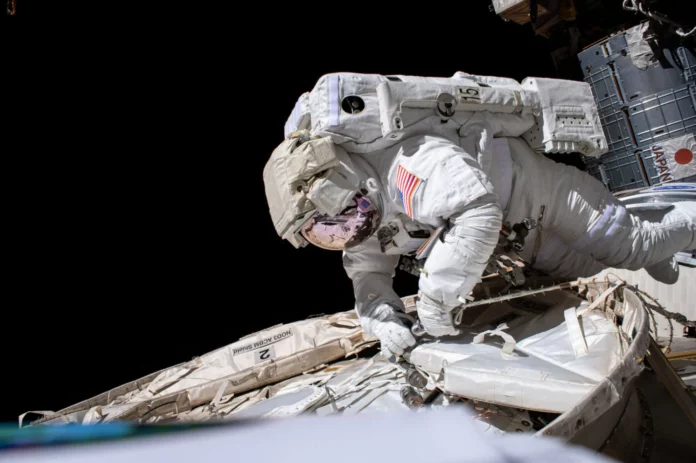Experts hope to collect microbiological samples to study how microbes behave and possibly thrive in harsh environments – but the harsh conditions in question are nothing like what one might expect.
Astronauts aboard the International Space Station (ISS) will attempt to collect microbiological samples from outside the space station during an upcoming spacewalk. The surface samples will be collected near life support vents, as detailed in a NASA statement released Tuesday, and could shed light on how the ISS releases microorganisms into space, if at all.
The extravehicular sample collection is part of the ISS External Microorganisms experiment, a NASA project that, as the name implies, studies microorganisms on the outside of the space station. The samples will be analyzed on Earth.
While spacecraft and spacesuits are sterilized before flight, humans have unique microbiomes filled with important microbes that cannot and should not be removed. So when astronauts go into the black void of space, they also take trillions of microorganisms with them.
“We can’t sterilize everything we send into space, nor do we want to, but we do a lot to limit the path of potential pathogens to the station,” said NASA microbiologist Sarah Wallace. “During launch, cargo, food, vehicles, and crew members all have their own microbiome, or set of microbes. When everything arrives on the station, these microbiomes become part of the space station’s microbiome.”
The microbiome of the space station is unlike any on Earth, as hitchhiking microbes face harsh conditions such as radiation and microgravity. Some of these organisms survive, adapt and even reproduce. Unique environmental pressures even cause mutations in microorganisms that don’t exist on Earth, but that’s a whole other story.
Scientists are very interested in these extremophiles – life forms that can withstand extreme conditions – because their properties may have implications for industry on Earth and shed light on how these hardy microbes might survive on other extraterrestrial planets such as the Moon or Mars.
As a result, astronauts often swab the interior of the ISS to monitor its unique microbiome. The upcoming collection of samples from the outside of the ISS is because the station is likely to release some of these microbes into space through the ventilation system.
In addition, the results of the external swabs could form the basis for the concept of panspermia, a hypothesis that suggests that life originated elsewhere in the galaxy before coming to Earth and colonizing it. For this to be plausible, some microbial ancestor must have survived the harsh conditions of outer space, similar to those outside the ISS, before eventually reaching Earth.
Panspermia remains a hypothesis, but scientists have previously tested how Earth’s extremophiles could survive in the vacuum of space, with algae and tardigrades doing surprisingly well.
In addition to previous experiments on how microorganisms behave beyond Earth, the new sample collection could shed light on how humans might pollute space. After all, we wouldn’t want to one day discover microbes on Mars just to wonder if they are really Martians or just hitchhikers.









